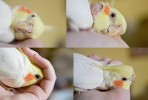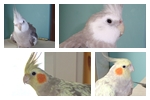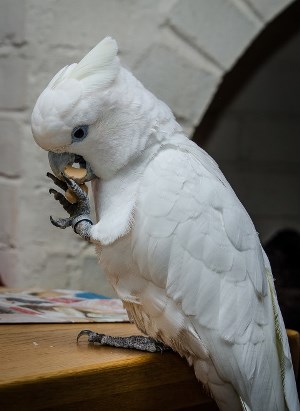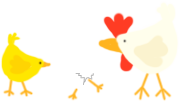Genetika
-

alinaaa - Pranešimai: 1748
- Užsiregistravo: 2008.06.09 15:40
- Miestas: Vilnius - Ignalinos r.
- Augintiniai:
gal kam reikalingas psl...čia kažkaip skaičiuoja kokių palikuoniu galima tikėtis,gaila nieko nesupratau 

norėjau pažiūrėt kokia pana krameriui pirkt,jai kada vaikučiu sugalvotu turėt,kokios reiktu,kad ne vien žali būtų...bet kiek suprantu tik žaliukai galimi...


norėjau pažiūrėt kokia pana krameriui pirkt,jai kada vaikučiu sugalvotu turėt,kokios reiktu,kad ne vien žali būtų...bet kiek suprantu tik žaliukai galimi...

-

evers - Pranešimai: 4410
- Užsiregistravo: 2009.10.21 15:21
- Miestas: kretingos raj,
- Augintiniai:
-

Kikimara - Pranešimai: 3651
- Užsiregistravo: 2010.07.26 19:18
- Miestas: Kėdainiai
- Augintiniai:
gal kas išverstu tiksliai paskutinius du sakinius 
''The Indian Ringneck Parrot most probably does not need a big introduction because next to Budgies, Lovebirds and Quarrions. This beautiful Asiatic parrot with its luxuriant green colour. With the male having a beautiful black and pink collar (ring) and long slender tail with its green and yellow and the eye black and the coral red beak. The Female is the same colour as the male as juveniles. But between 2 1/2 to 3 years when the male obtains his adult neck ring that the difference is obvious. This species has several mutations available. The most common is the Lutino. A truly beautiful colour of "Rich" yellow and with red eye and red beak. The male has a white and pink collar. This mutation is sex-linked recessive that means only males can be split to this colour example Lutino Male over a Green Hen. All Green young will be males that are split Lutino and all Lutinos will be Hens. But when you mate a Green Male to a Lutino Hen all the young are Green and all the cocks are split Lutino, but the Hens are only green.''
paimta iš čia..

''The Indian Ringneck Parrot most probably does not need a big introduction because next to Budgies, Lovebirds and Quarrions. This beautiful Asiatic parrot with its luxuriant green colour. With the male having a beautiful black and pink collar (ring) and long slender tail with its green and yellow and the eye black and the coral red beak. The Female is the same colour as the male as juveniles. But between 2 1/2 to 3 years when the male obtains his adult neck ring that the difference is obvious. This species has several mutations available. The most common is the Lutino. A truly beautiful colour of "Rich" yellow and with red eye and red beak. The male has a white and pink collar. This mutation is sex-linked recessive that means only males can be split to this colour example Lutino Male over a Green Hen. All Green young will be males that are split Lutino and all Lutinos will be Hens. But when you mate a Green Male to a Lutino Hen all the young are Green and all the cocks are split Lutino, but the Hens are only green.''
paimta iš čia..
-

evers - Pranešimai: 4410
- Užsiregistravo: 2009.10.21 15:21
- Miestas: kretingos raj,
- Augintiniai:
-

evers - Pranešimai: 4410
- Užsiregistravo: 2009.10.21 15:21
- Miestas: kretingos raj,
- Augintiniai:
Sveiki,
Noriu paklausti išmanančiųjų, kokie mažyliai gautųsi iš tokių nimfukų :
:
MAMA - perlinė cinamoniukė (jos mama buvo perlinė liutinosė, o tėtis paprastas-laukinis, bet gal turėjo tą cinamoninį geną, nes esu mačius jo sesę, tai atrodė tikrai cinamoninės spalvos).
TĖTIS - perlinis baltagalvis, įtariu, kad irgi cinamoniukas, nes plunksnų atspalvis labiau rusvas nei pilkas. Tėvų genetika nežinoma.
Prisegu būsimų tėvelių nuotrauką (joje jie dar jaunučiai nufotografuoti):

Noriu paklausti išmanančiųjų, kokie mažyliai gautųsi iš tokių nimfukų
 :
:MAMA - perlinė cinamoniukė (jos mama buvo perlinė liutinosė, o tėtis paprastas-laukinis, bet gal turėjo tą cinamoninį geną, nes esu mačius jo sesę, tai atrodė tikrai cinamoninės spalvos).
TĖTIS - perlinis baltagalvis, įtariu, kad irgi cinamoniukas, nes plunksnų atspalvis labiau rusvas nei pilkas. Tėvų genetika nežinoma.
Prisegu būsimų tėvelių nuotrauką (joje jie dar jaunučiai nufotografuoti):

-

romantishka - Pranešimai: 44
- Užsiregistravo: 2010.09.11 20:07
- Miestas: Vilnius
- Augintiniai:
Jei tėvai abu cinamominiai ir perliniai, tai ir vaikučiai tokie bus, nebent patinas dar kokių užslėptų genų turėtų, tai jie gal išlįsti galėtų.
-

sailor - Pranešimai: 22581
- Užsiregistravo: 2007.02.21 23:18
- Miestas: Kaimas Airijos vidury
- Augintiniai:
Dabar prisijungę
Vartotojai naršantys šį forumą: Registruotų vartotojų nėra ir 3 svečių






